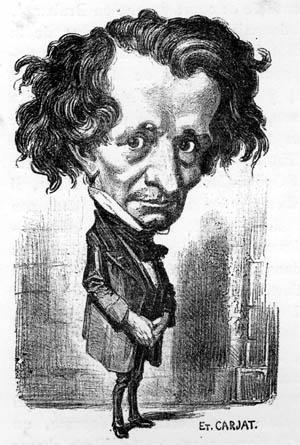
Because he composed his Roméo et Juliette and called it a “dramatic legend”, since no genre was big enough for him, and because in the section depicting the Ball at the Capulets, he begins with a melody expressing Roméo’s grief, which sounds like this:
and follows it with a theme representing the masq’d ball itself, which sounds like this:
and then he combines the two themes together (which sounds like this:)
Those are all great reasons to love Hector Berlioz, but the best reason is that, at the spot in the score where he overlays the two themes, he actually wrote these very words and had them typeset and printed in the published score

so that noone would miss this masterful stroke of compositional prowess and fail to recognize his genius. Forget the fact that the art of counterpoint was well over 700 years old, and that people like Bach and Tallis had composed far more complex contrapuntal textures simply for the Grace of God — no, M. Berlioz did what every other composer wishes he had the cojones to do, and let you know exactly how good he was, in three different languages.
Bravo, Hector.